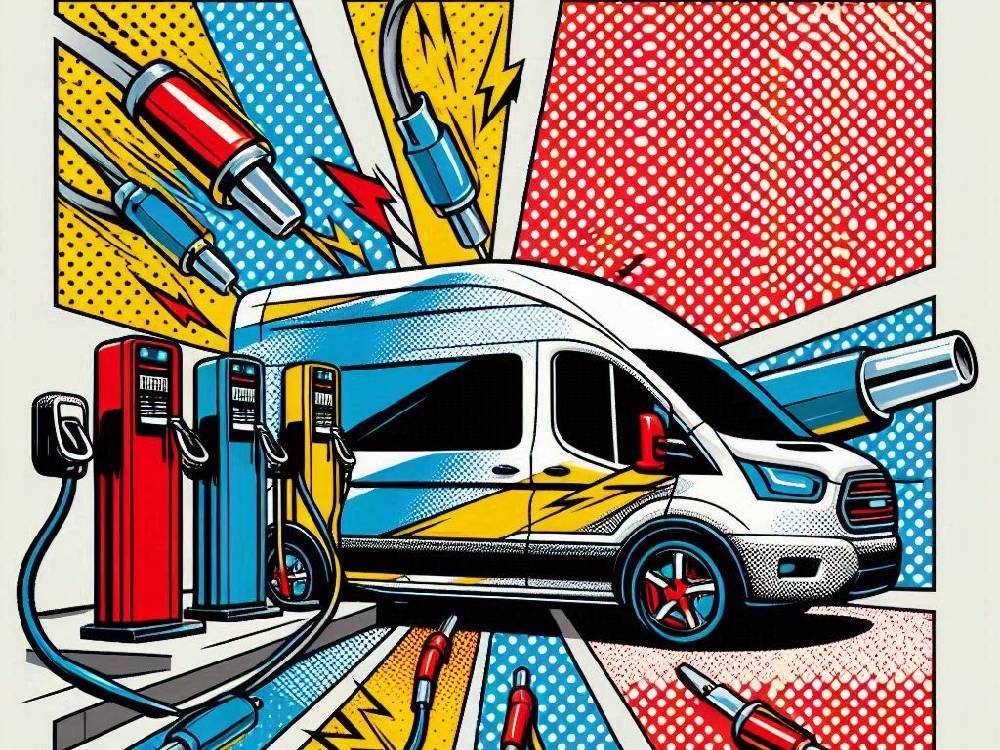Introduction
Electric vans are the future. But there’s one major problem. Public Charging.
A staggering 90% of businesses say they would rely on public charge points if they switched to EVs.
But with limited infrastructure, unreliable access, and regional imbalances, many fleet operators see full electrification as an impossible challenge.
Key Takeaways:
- 9 out of 10 fleet operators would use public charging if they went electric.
- Lack of public charging is the biggest roadblock to EV adoption.
- 81% of businesses struggle to install private chargers at depots.
- The UK Government aims for full electrification by 2035, but businesses say 2028 is the earliest viable date.
- Despite challenges, 75,000 electric vans are already on UK roads—and growing.
So, what’s stopping mass adoption?
Let’s break it down.
The Growing Demand For Electric Vans (But the Public Charging Problem Remains)
Fleet operators are eager to go electric.
However, several obstacles still stand in their way.
They know that electric vans can cut costs, improve efficiency, and enhance their brand reputation.
But the real challenge?
Public charging infrastructure simply isn’t ready.
According to Vauxhall’s Electric Van Adoption Report:
- 84% of fleet operators already have at least one electric van.
- 90% of those without an EV plan to introduce one within the next year.
- 23% say a lack of reliable public charging is the main barrier stopping them from switching fully.
The 2035 Deadline is Approaching
The UK Government has officially set a hard deadline for petrol and diesel sales, banning them entirely by 2035.
As a result, fleet operators are now forced to prepare for this major transition.
But many don’t believe full electrification is realistic until at least 2028.
Without reliable charging, businesses will be left behind.
“Switching to EVs isn’t the issue—finding a place to charge them is.”
Related: Why Proper Vehicle Compliance is Crucial for Road Safety
Public Charging: The Weakest Link In EV Adoption
The Numbers Don’t Lie
The UK’s public charging network is struggling to keep up with the rapid rise of electric van adoption.
In fact, only 19% of households that rely on public chargers actually have access to one, making the transition to EVs even more challenging.
72% of on-street charge points are in London, leaving other areas underdeveloped.
81% of fleet operators say installing private chargers at depots is “problematic.”
The result?
Many businesses simply can’t commit to full electrification.
Fleet Operators Need More Than Just Motorway Chargers
Many public charge points are geared towards private car owners.
But fleets have different needs:
- Fast-charging hubs near industrial zones.
- Reliable on-street charging in regional areas.
- Affordable pricing models that don’t cut into operating margins.
Without these changes, EV adoption will stagnate.
Related: How Telematics Devices Can Save You Money on Van Insurance
The Real-World Impact: Delayed EV Rollouts & Higher Costs
Why Businesses Are Holding Back
Right now, businesses want to go electric.
But the reality of charging challenges is holding them back.
Longer waiting times – Most fleet operators say they can’t go fully electric before 2028.
Increased operational costs – The lack of infrastructure means higher costs for fleet downtime and charging delays.
Lost savings – EVs are cheaper to run, but poor charging access offsets potential savings.
“Fleets can’t afford to take risks on a charging network that doesn’t exist.”
Related: Is Business Van Insurance Cheaper?
The Problem Won’t Fix Itself
The demand for electric vans is growing.
But public charging access isn’t keeping up.
Fleet operators are clear:
If charging were more accessible, businesses would find it much easier to transition to EVs.
As a result, many more fleet operators would be willing to make the switch sooner rather than later.
So, what needs to happen?
Let’s break it down.
Local Authorities Must Step Up
Councils undeniably play a key role in EV adoption.
Since they control on-street parking, they also decide where charge points go.
Despite this, many businesses argue they aren’t acting quickly enough.
Yet, many businesses argue they aren’t acting fast enough.
Key Issues:
- Charge points are installed where it’s easy—not where they’re needed most.
- Permits & planning approvals are slow, delaying progress.
- Public-private partnerships are lacking, leaving funding gaps.
The Electric Streets of Britain campaign aims to change this.
Vauxhall is gathering data on where fleets need chargers.
Then, they’re passing it to local councils to push for faster action.
“Without council support, EV adoption will stall—fast.”
Related: What is the Cheapest Van Insurance Group?
Government Funding Is Helping, But It’s Not Enough For Public Charging
The UK government is investing billions into EV infrastructure.
But is it enough?
Not yet.
What’s Working:
The LEVI Fund significantly boosted public chargers, increasing their numbers by 38% in 2024.
In addition, new grants were introduced to help businesses install private chargers more easily.
Faster approvals for motorway & service station chargers.
But here’s the catch.
The distribution of chargers is wildly uneven.
72% of on-street chargers?
They’re in London.
That means businesses outside the capital are left behind.
Without proper investment, rural and regional businesses will struggle to transition.
As a result, many may fall behind in the EV shift.
“Fleet operators don’t need promises—they need charge points where they actually operate.”
Related: How a Simple Van Insurance Lapse Put A Dyig Man In Court – Learn Why
Business Incentives Could Speed Up The Transition
Most fleet operators want to go electric.
But charging logistics hold them back.
What would help?
- Bigger tax incentives for businesses that switch early.
- Grants for depot-based fast chargers to reduce public reliance.
- Stronger collaboration between fleets & charge-point providers.
Right now, 91% of fleet operators say going electric would boost their reputation.
But costs and infrastructure are forcing them to wait.
If the government wants to hit its 2035 goal, incentives must increase now—not later.
“It’s simple: Make EVs more convenient, and adoption will skyrocket.”
Related: Navigating the Rise In Van Insurance
Conclusion
Electric vans are here to stay.
But without serious investment in public charging, fleet operators will delay adoption.
Right now, the message from businesses is clear:
EVs make sense.
But charging must improve.
Local councils, government, and private companies need to act fast.
If the UK wants to lead the electric revolution, the time to fix charging is now.
Further Reading
Want to know more? Check out these articles:
Are You Driving a Car or a Van? Check Your Insurance Policy




